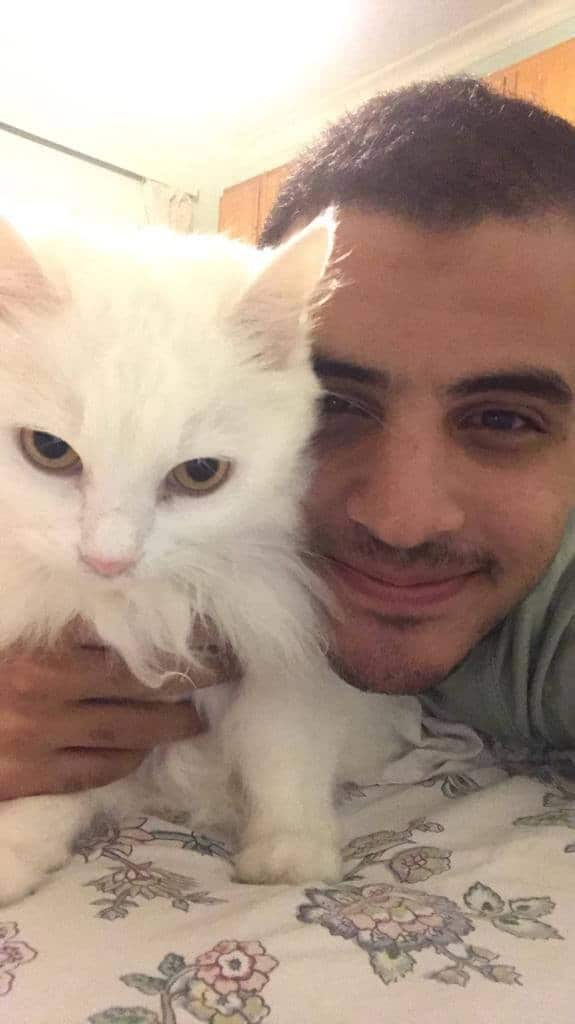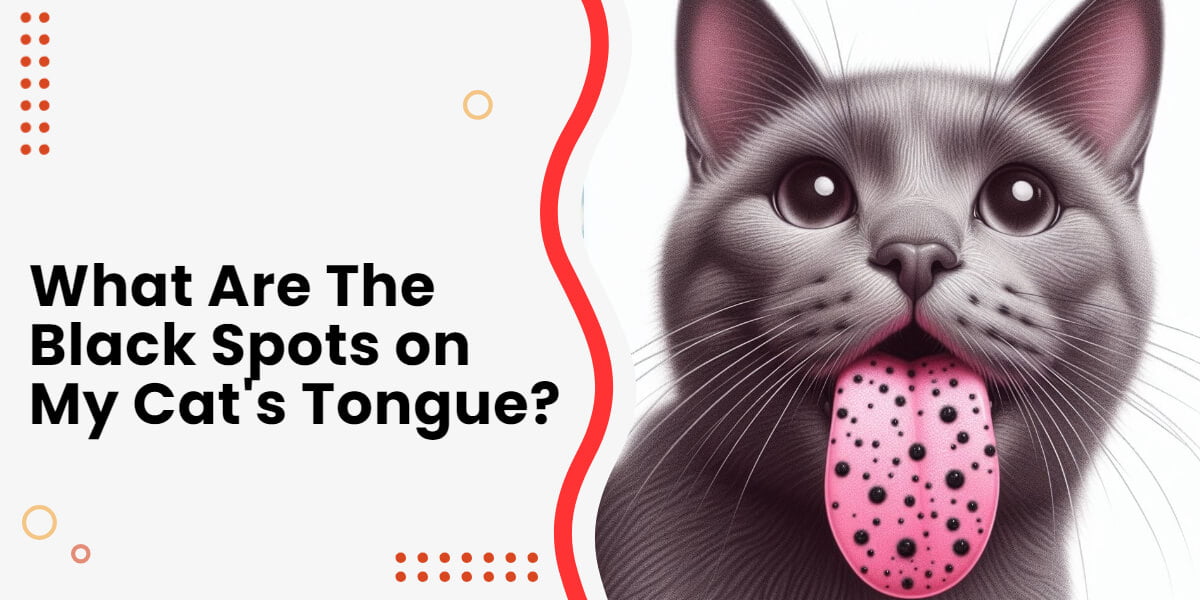Have you noticed black spots on your cat’s tongue? It’s not uncommon to wonder what they are and if they’re something to worry about.
In this article, we’ll explore these spots, known as lentigo, and what they might mean for your cat’s health. We’ll break it down step by step, so you’ll have a clearer picture of what’s going on inside your furry friend’s mouth. Let’s find out more about these mysterious spots and how they affect your cat!
Table of Contents
Summary: What are the Black Spots on a Cat’s Tongue?
Black spots on a cat’s tongue, mouth, or gums are usually because of a common condition called lentigo. It’s harmless and just changes the appearance. Still, it’s good to check these spots to make sure they’re not melanoma, a serious issue that can cause cancerous tumors.
What Is Lentigo and what causes it?
Lentigo is a genetic condition that causes an increase in pigment-producing cells called epidermal melanocytes. As these cells grow in number, black or brown little spots start forming on your cat’s face, especially on the tongue, nose, lips, and eyelids.
While orange cats are the most likely to be affected by lentigo, it’s not exclusive to them. Lentigo can also appear on yellow, tortoiseshell, and calico cats. It is also worth mentioning that lentigo affects middle-aged to older cats more than younger ones.
To this day, the exact causes of lentigo are still a mystery. While freckles, for example, form on human skin in association with sun exposure, lentigo on felines have no relation to increased sun exposure.
What Are the Early Signs of Lentigo?
The early stages of lentigo often begin as little black spots popping up on the cat’s lips before spreading to their tongue, gums, and nose. As the little kitten ages, the black spots grow more prominent in number and size, causing clusters of tiny spots to merge and form larger, more obvious black spots.
How to Identify Lentigo on My Cat?
Apart from the visual cues we explained earlier, like the black or brown spots on your cat’s tongue, gum, nose, or eyelids, there is a simple test you can do to help identify lentigo.
Gently feel the black spot on your cat’s tongue with your fingertip and observe whether the spot is raised over the rest of the tongue’s surface or if it’s merely a different color pigmentation. If the black spot is even with the rest of the tongue, then it’s most likely to be the effect of lentigo and not a malignant tumor.
However, it’s worth noting that in some rare cases, even-surfaced black spots might also be tumorous. So it’s always better to ask for a professional opinion.
Users Also Read:
– How Much Miralax Should I Give My 17-Pounds Cat?
– My Cat’s Xiphoid is Sticking Out, Should I Worry?
is lentigo dangerous for my cat?
Lentigo in cats, characterized by the appearance of dark pigmented spots on the tongue, gums, or lips, is typically not dangerous on its own. These spots, often resembling freckles or small patches of dark coloration, are generally benign and do not cause any harm or discomfort to the cat.
However, it’s crucial to differentiate lentigo from other potential oral health issues that might manifest as dark spots. Consulting a veterinarian is essential to accurately diagnose the condition. Sometimes, dark spots on a cat’s tongue might indicate other more serious health concerns, such as oral melanoma or other oral tumors, which would require immediate medical attention.
True lentigo, though harmless, can gradually increase in number as a cat ages. While these spots might not pose a direct threat to the cat’s health, monitoring any changes in size, shape, or texture of these spots is advisable. Any alterations or sudden developments should prompt a vet visit to rule out any underlying issues.
In summary, lentigo itself is not typically dangerous to a cat’s health. However, vigilance and regular oral health checks, especially as your cat ages, are crucial to ensure any changes or abnormalities are promptly addressed by a veterinary professional.
Related: How much chicken can I feed my cat?
When Should Black Spots on My Cat Be a Worrying Sign?
While the black spots caused by lentigo are no cause for concern, there are similar-looking medical conditions that may cause health issues to your cat if not treated early.
- Melanoma: As we explained earlier, melanoma is one of the most serious conditions that can affect cat skin. This malignant tumor can spread rapidly, starting from the tongue and mouth all the way to the liver and lungs. Melanoma’s biggest tell is a red lump on the skin or raised black spots.
- Fleas: These parasites feed on sucking your cat’s blood and look like tiny black dots that are easy to miss on your cat’s fur or skin. Fleas spread widely, especially in the summer, and lay eggs and dirt into your cat’s fur. In such case, it may be helpful to use a flea treatment like Natural Care Flea and Tick spray.
- Acne: This is the most common skin condition in cats. They start as black dots on the cat’s skin, then turn to red inflammation that can end up being quite itchy for them. Poor hygiene is usually the primary cause of acne for felines.
How To Check the Inside of Your Cat’s Mouth and Why It’s Important to Do So?
A cat’s dental health is usually a good indicator of their overall health. Any damage to your cat’s tongue, teeth, or gums could lead to dental and other medical issues. As a general rule of thumb, a cat’s gum should be firm and pink.
As a cat owner, the idea of opening your cat’s mouth and checking its dental condition is essential, even if it can be a little intimidating at first. But, don’t worry, we got your back. Here’s how you should safely open your reluctant cat’s mouth and how to assess their dental condition.
Bottom Line
Black spots on cats are generally not a cause for concern. They’re usually the product of a genetic condition called Lentigo, which only causes cats’ cosmetic changes. On some rare occasions, however, black spots can signify melanoma, a serious medical condition that requires instant medical interference.
To help keep your pet safe and healthy, we advise you to schedule regular checkups with your vet and always report anything irregular that you might notice.

I’ve been living with cats since 2008 and I can confidently say I have more feline friends than humans lol. I currently live with 5 cats in different life stages; two of them are less than one year old, one is 2-ish years old and the oldest two are 9-ish years old. I’ve developed a strong bond with cats over the years and I’m eager to share my experience through this blog. You can learn more about my cats here.

